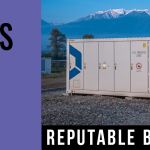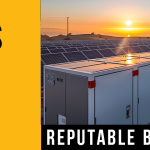 Over 9,000MWh of battery energy storage could be deployed in Britain over the next five years as the sector enjoys a trend towards “explosive growth” driven largely by the country’s clean energy transition, a market analyst has said.
Over 9,000MWh of battery energy storage could be deployed in Britain over the next five years as the sector enjoys a trend towards “explosive growth” driven largely by the country’s clean energy transition, a market analyst has said.
Lauren Cook of Solar Media’s Market Research division spoke to CEN sister publication Energy-Storage.News this week on the publication of ‘UK Battery storage: Opportunities & Market Entry Strategies for 2018-2022’, a new report.
Cook found that in just 12 months, the UK’s pipeline for new battery storage projects has grown by over 240%, with forecasted installations in 2018 set to rise more than 200% year-on-year. Opportunities are being created by a range of drivers including a national commitment to phase out coal, falling technology costs and more than 30GW of wind and solar capacity ripe for co-location with batteries.
“The market is growing and it’s changing rapidly. There’s now projects completed on the ground. Once global companies start to see it’s not just a speculative market, it will make sense for them to think about how to enter the market and what the opportunities are for them.
“They will then need to know who is active in the market, who has these opportunities and who they will have to work with to take advantage of those opportunities.”
Going beyond the deployment figures, Solar Media Market Research also looked extensively at business models, another aspect of the industry analyst Cook said is changing fast. With an emphasis on projects earning long-term revenues, it is becoming commonplace to speak of a “revenue stack” – earning multiple revenues streams for providing a range of services. However, Cook said, there is no such thing as a “typical” stack in the market today.
“I’m not sure there’s any such thing as a typical stack because there are many factors involved, but if you look at the timeline from the EFR of 2016 you had those projects were successful, those projects then went on to apply for the Capacity Market (CM), T-1 and T-4 in early 2017,” Cook said.
“Some of those were successful, some of those weren’t. We then saw the FFR auctions happening throughout 2017. Those projects also participated in those auctions, new projects also came in.
read more
 Maryland residents and commercial properties can now claim energy storage systems against their state income taxes.
Maryland residents and commercial properties can now claim energy storage systems against their state income taxes. The California Public Utilities Commission in mid-January became the first state regulator to
The California Public Utilities Commission in mid-January became the first state regulator to  To power entire communities with clean energy, such as solar and wind power, a reliable backup storage system is needed to provide energy when the wind isn’t blowing and the sun isn’t out.
To power entire communities with clean energy, such as solar and wind power, a reliable backup storage system is needed to provide energy when the wind isn’t blowing and the sun isn’t out. New York has become the latest US state to decide to support energy storage through its legislature and will be setting targets for deployment of the technologies in the coming weeks.
New York has become the latest US state to decide to support energy storage through its legislature and will be setting targets for deployment of the technologies in the coming weeks. One battery to rule them all: when it comes to energy storage technology, it’s hard to beat lithium-ion. However, the rise of wind and solar has brought forth new motivation to develop new batteries that offer higher energy density at lower cost, and it looks like magnesium is in the running.
One battery to rule them all: when it comes to energy storage technology, it’s hard to beat lithium-ion. However, the rise of wind and solar has brought forth new motivation to develop new batteries that offer higher energy density at lower cost, and it looks like magnesium is in the running. SAN FRANCISCO–(
SAN FRANCISCO–( A new report into energy storage commissioned by chief scientist Alan Finkel highlights the enormous opportunities for storage in Australia, but underlines how little is actually needed over the short to medium term, even at relatively high levels of wind and solar.
A new report into energy storage commissioned by chief scientist Alan Finkel highlights the enormous opportunities for storage in Australia, but underlines how little is actually needed over the short to medium term, even at relatively high levels of wind and solar. There’s no question wind and solar energy are now competitive with fossil fuels around the world on a per-kilowatt-hour basis, but they still face the challenge that they’re intermittent sources of energy. The sun won’t provide energy to make electricity at night and wind turbines only generate electricity about half the time, at best. For now, natural gas or another fossil fuel is needed to fill in any gaps in electricity supply.
There’s no question wind and solar energy are now competitive with fossil fuels around the world on a per-kilowatt-hour basis, but they still face the challenge that they’re intermittent sources of energy. The sun won’t provide energy to make electricity at night and wind turbines only generate electricity about half the time, at best. For now, natural gas or another fossil fuel is needed to fill in any gaps in electricity supply. There are plenty of mixed messages and political pitfalls in today’s report into energy storage that has been ticked off by Chief Scientist Alan Finkel.
There are plenty of mixed messages and political pitfalls in today’s report into energy storage that has been ticked off by Chief Scientist Alan Finkel.



